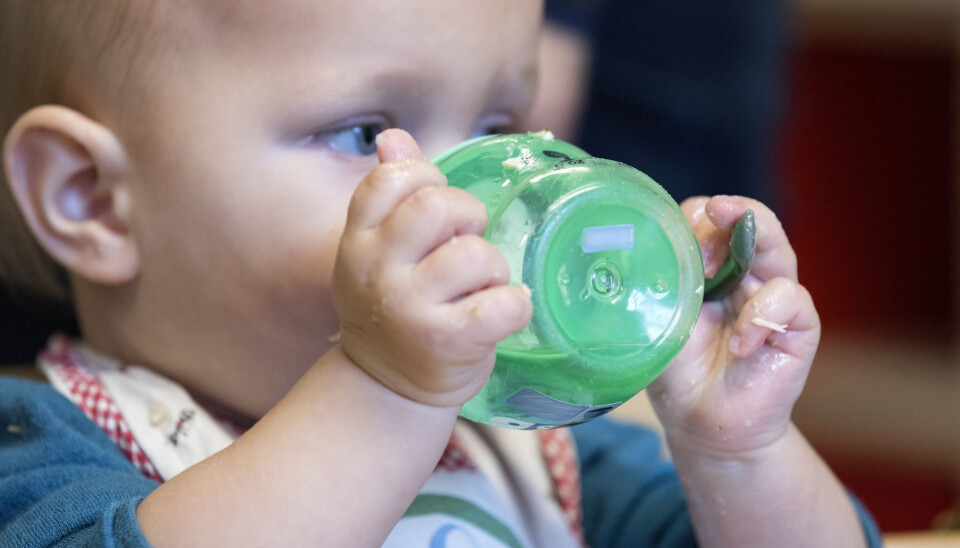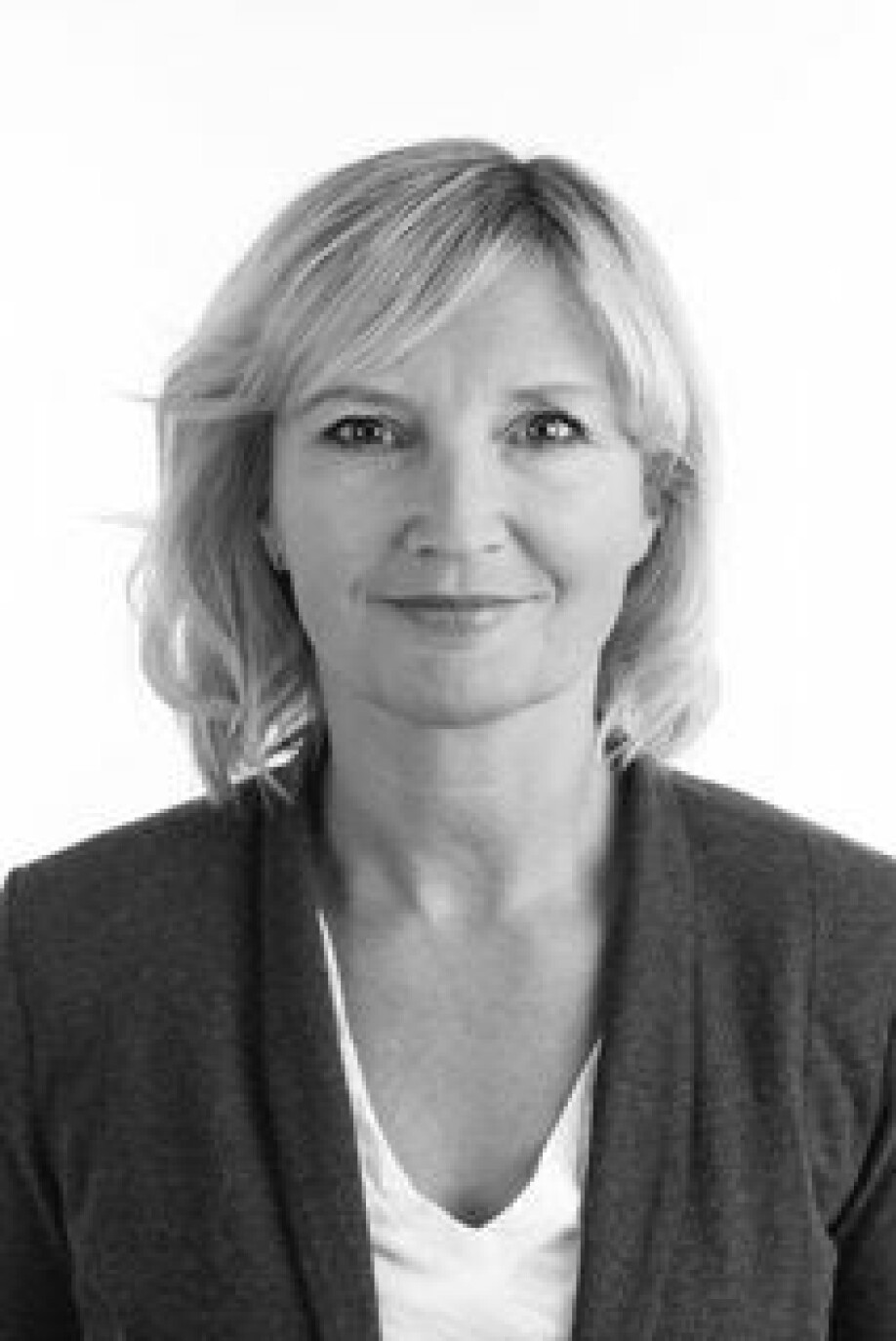
We need to acknowledge how tough it is for toddlers to start in kindergarten, say psychologists
What should you consider when leaving your one-year-old with other adults? Specialists in children's attachment offer some advice.
As a parent, you are vitally important to your child.
Your child places all its trust in you. Their experiences of being picked up and comforted, being given food or a dry diaper become expectations.
You are there and watching out for your child.
“Children establish a hierarchy in their relationships. For many children in the world, mum is in the top spot, but it can just as easily be dad.
When children experience stress, they first seek out the person at the top of their care hierarchy, according to Pia M. Risholm Mothander, a senior lecturer in developmental psychology at the Department of Psychology, Stockholm University.
Children start day-care when they are still closed

What happens when a small child is left with other adults and new routines?
Ida Brandtzæg and Stig Torsteinson believe we have to take this question more seriously than we do today.
They are both psychology specialists and the directors of the Attachment Psychologists Education Centre and Clinic.
Previously, they worked with young children at the Nic Waals Institute, Lovisenberg Hospital, Aline Infant Centre and R-BUP East and South.
“We have to do a better job of recognizing how tough it is for small children when they start going to day-care centres,” Brandtzæg says.
Most children today start attending a day-care centre during the period in life when they are still "closed" to other people than their primary attachment figures, she says. This period lasts into the child's second year of life.
“Paradoxically, during this period the child is expected to open up to more new people. This entails facilitating a challenging care task so that the experience is positive for the child,” she says.

We know quite a lot
We’ve gradually come to know quite a lot about what is important in order for a child to develop a secure attachment to the adults in their day-care setting, say the two psychologists.
“Fortunately, several day-care institutions now have a strong understanding of how to meet children's needs in a good way. They’re now talking more about a period of attachment than a period of transition,” says Torsteinson.
Several centres emphasize that the child should have one or two regular attachment figures instead of being looked after by several people.
A number of centres are making it easier for parents to spend more time in the day-care at the beginning, so both parents and children will get to know the adults there – and vice versa.
Parents need to know how important they are
Understandably, day-care staff need to establish a framework around how to organize the first days and weeks, say Brandtzæg and Torsteinson.
At the same time, it is important to make room for flexibility. There’s a lot of individual variation in how long a child needs to adjust to the new environment, say the psychologists.
“It’s important for both parents and the day-care centre to recognize how important the parents are for the child’s well-being. They know things about the child that are incredibly valuable for the centre and should be gradually transferred in order for the child to have a safe start,” says Torsteinson.
Give the child inner peace

Brandtzæg and Torsteinson are interested in new knowledge about the brain. The research talks about the ‘predictive brain.’
Psychologists believe the brain’s central task is to ask itself: "What’s going to happen now?" and "Have I been in a similar situation before?"
Inner peace in the child is supported when the ‘predictive brain’ can assume that good things will happen.
When the child goes from being at home with the parents to being at day-care, the brain's predictive task is challenged. The child is encountering both new people and new situations.
“You can imagine then that the child's brain has to work hard to integrate the new experiences and hopefully form positive and trusting new relationships. This is one of the reasons why stress increases in children when they start going to day-care,” Brandtzæg says.
Day-care can reduce stress
“We help the child's 'predictive brain’ when the child has the opportunity to get to know one or two people well,” say the psychologists.
In addition, it is important that the people a child becomes familiar with offer a relationship that provides a secure attachment. This trust makes it easier for children to learn how to become acquainted with new people and surroundings so that they become less stressed.
How many attachment figures does the child have?
Brandtzæg and Torsteinson are specialists in attachment in children. They are now actively working to strengthen the quality of relationships between children and childcare staff through various programmes.
Opinions within attachment theory differ as to whether children in fact have only one attachment figure in their first year of life or can have multiple attachment relationships.
Studies from other cultures where children have several caregivers indicate that a child experiencing a high level of stress seeks out one caregiver who can more effectively regulate emotions than others.
When the emotions are not as intense, more people can provide support.
But if the child becomes very tired or upset, the individual at the top of the child’s care hierarchy is the most comforting, Brandtzæg says.
“This is why day-care teachers, even if they offer comfort according to best practices, don’t always manage to reach a child until the child has developed a connection to one or two staff members,” she says.
Benefit from knowing more people
Mothander believes that getting to know more adults early in life is advantageous for children.
At the beginning of life, however, the person at the top of the care hierarchy is the one who can best regulate the child's emotions.
“Developmentally, an infant isn’t able to have too many relationships. But as the brain develops, so does the ability to generalize and draw boundaries between the various relationships.
However, this process does not happen overnight and develops through gradual cognitive maturation. When the child starts in a day-care centre, relating to more adults gradually becomes easier.
“It’s good to meet a lot of dependable, loving and attentive people who are prepared to meet the child's needs. The child gains trust in other people.” Mothander believes this confidence and security will impress themselves on the child’s personality.
Must sew two worlds together
Brandtzæg and Torsteinson point out that letting young children be looked after by several adults is not uncommon around the world.
In so-called collectivist cultures, children are cared for by grandmothers, aunts, uncles, neighbours and siblings. This was previously the case in Norway and many other countries, they say.
The development in Norway from the 1950s and 1960s to the present day has shifted from mothers being the primary caregivers for their children to more collectivist childcare with multiple people looking after the children.
In Norway today the public sector and the family have collaborated to create a new childcare collective, say Brandtzæg and Torsteinson.
This model can work well, but requires increasing the seamlessness between the units in the collectives. They believe the transition period between home and day-care centre is especially important.
Closer collaboration between the childcare setting and home also makes the job of the child's ‘predictive brain’ easier.
More than wiping noses
The psychologists believe we need to recognize just how enormously important and demanding the work done in a day-care centre is.
“Day-care centres have become the place where children’s lives get their start. Childcare staff take on great emotional and mental work. The responsible authorities need to understand that what they do involves more than sitting in the sandbox and wiping noses.
“A lot of other professional groups, like psychologists, recognize how demanding it is to work with other people's feelings,” says Torsteinson. He believes day-care teachers need similar recognition.
Many staff are interested and motivated
Day-care staff therefore need a healthy work environment, increased guidance and knowledge about child psychology and what kind of mental work is required to provide professional care, say the psychologists.
“Employees are sometimes thrown into big emotional tasks without having good working conditions in place. This creates stress for the employees, which in turn also affects the stress level of the children,” Brandtzæg says.
There will always be a need for further development in Norwegian day-care centres.
The two psychologists have found that many day-care facilities are interested and motivated to improve.
Translated by: Ingrid P. Nuse
References:
Ida Brandtzæg, Stig Torsteinson, Guro Øiestad: Se barnet innenfra (See the child from within), Kommuneforlaget, 2013.
Ida Brandtzæg, Stig Torsteinson, Lars Smith: Barn og relasjonsbrudd (Children and relationship breakdown), Fagbokforlaget, 2019.
Anders Broberg, Pia Risholm Mothander, Pehr Granqvist: Anknytningsteori (Attachment theory), Natur & Kultur, 2020.
———
































